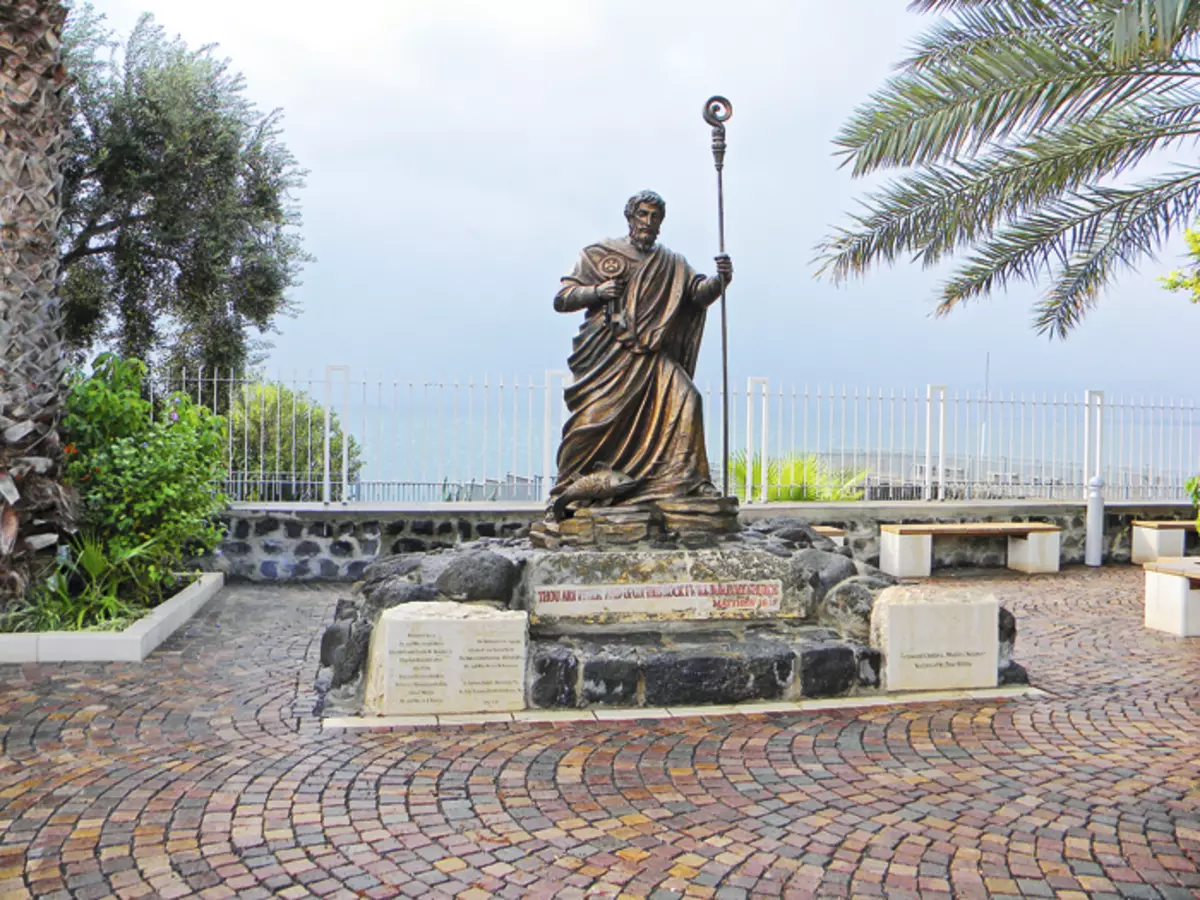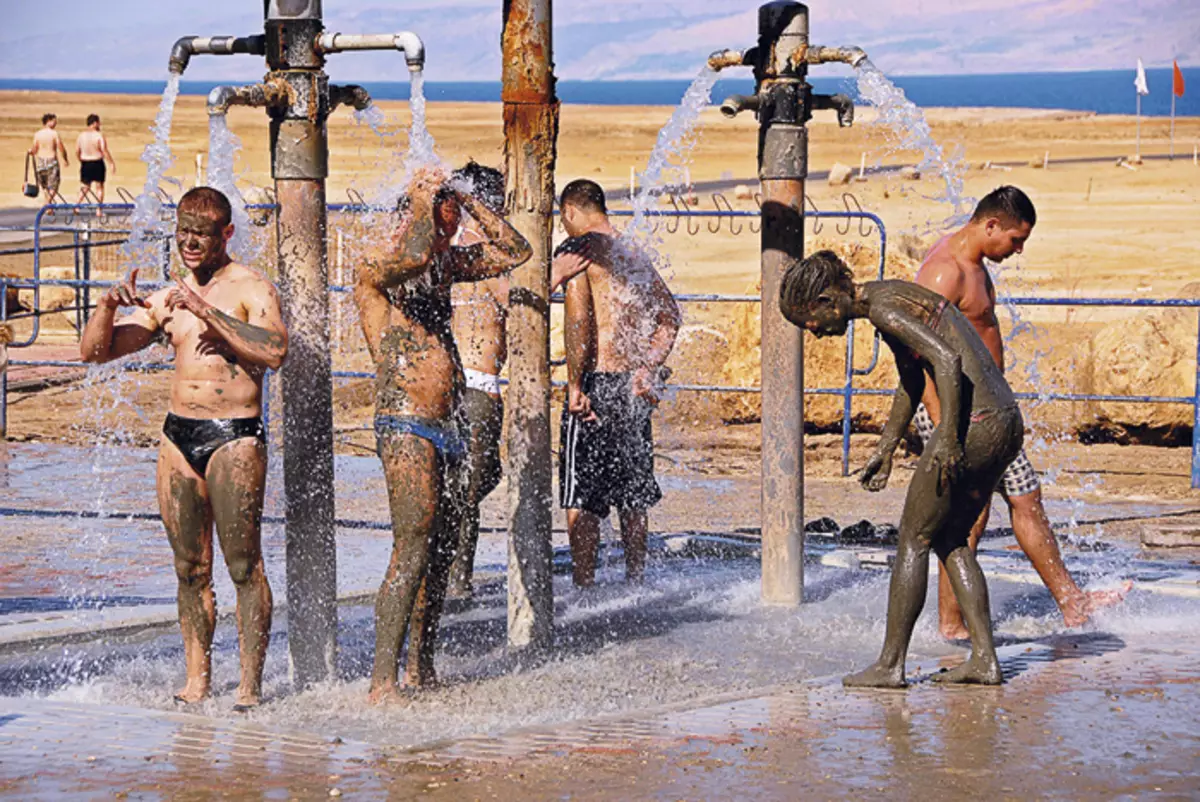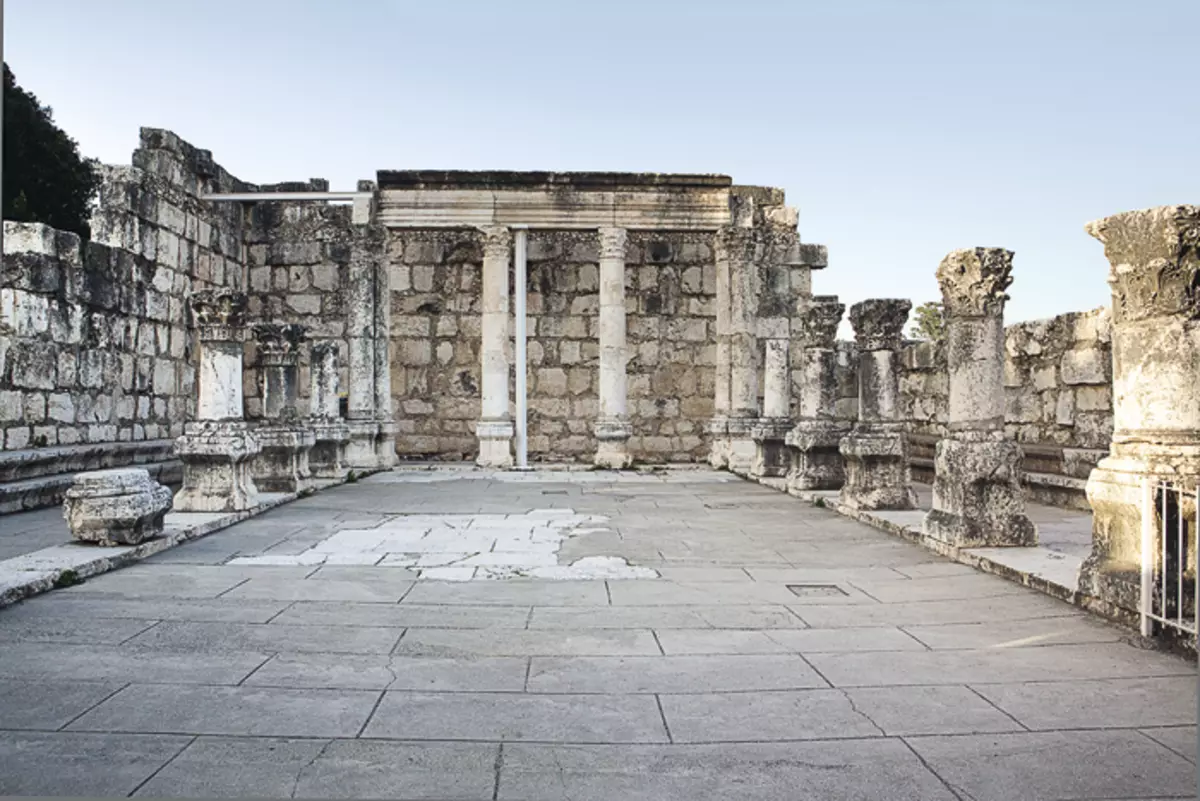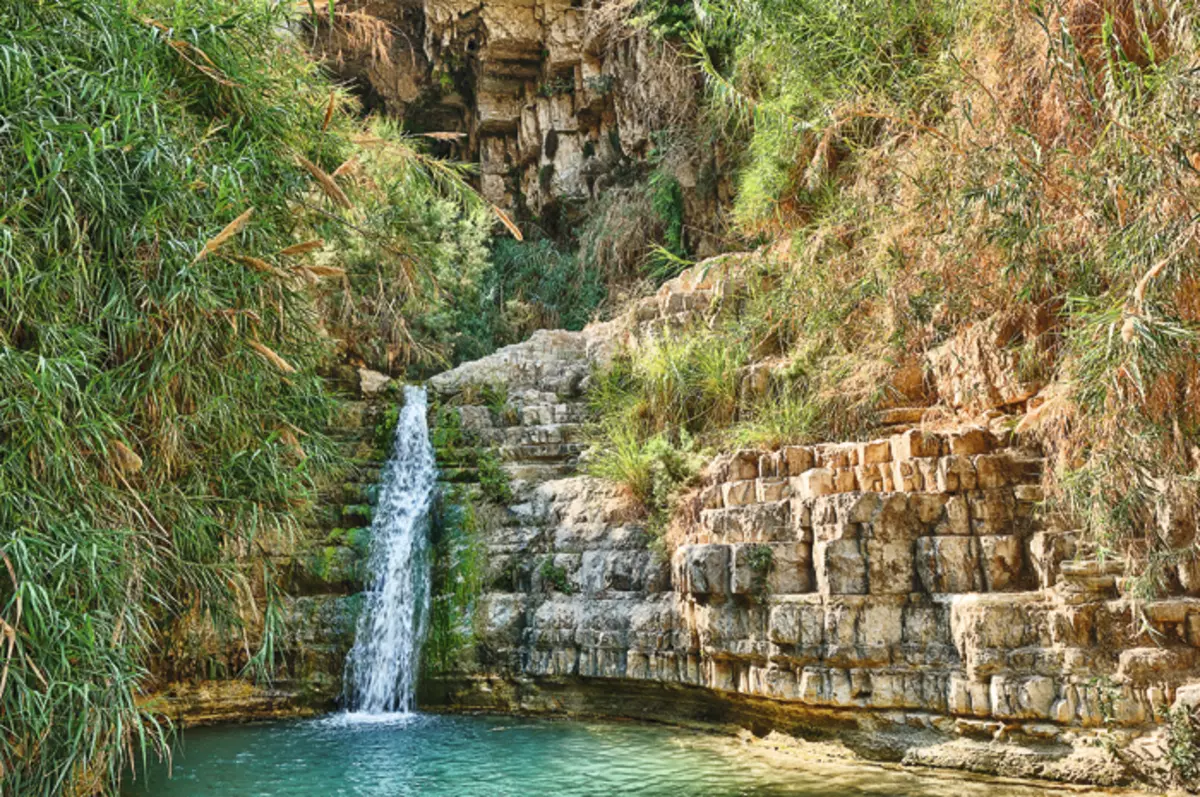"From the pier fishing the apostle Andrey, and the Savior walked around the water," we float on a wooden boat along the Galilee Sea, and the unresporing hit of the Nautilus Pompilius group in these circumstances would be an ideal soundtrack.
Alas, our captain with the biblical name David is in stock only records Adele and Tracks Brian Adams. And it is natural: the majority of tourists who have decided to go to a cruise on the water, from whose bunching "Andrei delivered Pescarei," not pilgrims, lovers of religious shrines, and romantic couples.
Waves take effect. David offers me to get up at the helm, but warns about caution, says that in winter the storms are incredibly strong. "Sometimes it seems that you are in the middle of the stormy Atlantic," the captain notes. Some remarkable details are also found out: it turns out that the Galilee Sea, located in the northeast of Israel, is actually not at all the sea, and the freshwater lake, and on the geographical maps it appears called the Kineet. By the sea, it was called in antiquity just because of the flushing waves. The old name is still not abolished from respect for the Christian tradition, because many events described in the Bible occurred just on his shores.

Snack from the chick-puree hummus - one of the popular national dishes
Photo: pixabay.com/ru.
City of St. Peter
Attention, a trick question: "What city is most often mentioned in the Scripture?" No, it is not Jerusalem, but Capernaum, where, according to the Bible, I found a shelter expelled from Nazareth Jesus Christ. Here he found his students: Peter, Andrei, Levie Matthew and the Zepleva Brothers - Jacob of the Senior and John the Bogoslov. Today, only the ruins remained from the once prosperous city, so the capernaum is more correct to call the archaeological park - this was trying to the Arabs and Persians who destroyed it in the VII century. In the biblical times, the city flourished, because trading routes held through it, which began on the coast of the Mediterranean Sea and leading to Syria and Small Asia. The impressive statue of St. Peter is the first thing you see, being here. The fact is that according to the biblical tradition, Christ lived just in the house of the destroy of the apostle, healing it from the hot. Today, the Catholic Church is erected at the site of the housing, and this is the only modern building of Capernahaum. Outwardly, it does not particularly represent anything special, but under its transparent floors, the ruins of the ancient octagonal Byzantine church, acting here in the old days, are visible. However, consider the impressive columns that remained from the White Synagogue, which was built in the city in the III-IV centuries of our era, are many times more interesting. Researchers do not believe without reason: its building built on the site of the old synagogue, where Jesus Christ preached himself. Moreover, they have and archaeological evidence of this fact: on one of the columns there is an inscription: "Halfi (Alphaus) Bar Zevid (Zeabida) Son Johnana did it. "Who is it?" - you ask. Of course no, but historians tend to believe that the Bar Zezide is a Jewish analogue of the Zevedueev's name, which the Apostle John theologians was wary, and since he was the only follower of Christ, who lived to deep old age, the master who created a column throughout Visibility, I had a direct descendant. Near Capernahauma - Magdala ruins, another Galilean city, from where I already come from Maria Magdalene. True, active excavations are still underway there, so that tourists are far from archeology, it is unlikely to wonder not yet identified ruins.

On the territory of Kibbutz Sha'ar Hagolan Opened Museum of the Yarmuk Culture
Photo: pixabay.com/ru.
Back to the Future
The surroundings of the Galilers Sea are curious not only by sights associated with the life of Christ. There is a social miracle of our day. We are talking about kibbutzh - youth associations that have arisen in Israel at the beginning of the 20th century. The main feature of the communities is the principles of equality and fraternity by them. In practice, they are implemented in joint ownership of land, collective decision making and the same for all employees wages. The profit goes to ensure the public communes free housing and nutrition, payment for medical services and education for children. The most famous local Kibbutz - Degania Alef. He is the oldest in the country, it was founded in 1910 young people who arrived here from Eastern Europe. "Our name is an abbreviation from two Wheat words and" God, "says Tamar Gal Sarai, the granddaughter of the founder of the commune. Her grandmother Miriam Barats ran away from his native Boguslav in the distant Israel to meet the dream of a fair society of a new type. As a result, the goal has achieved, and married one of his associates. However, it is not necessary to think that the path to the success of the founders of Kibbutsev was littered with rose petals. The land of young people got from the Jewish National Foundation, but the idealists were delivered hard conditions: they will be able to turn malaria swamps in a year in a blooming garden - it will remain yours. Miriam says that in the first year the immigrants lived in the clay barrack, work clothes were sewed from burlap, and they were fed with porridge and canned food left from the British army. However, the labor feat was not left without awards: today Degania Alef is a prosperous agricultural enterprise, and three hundred adults and one hundred and twenty children live here. The principles of collectivism here are still strictly followed: the salary of everyone is the same, the education of children and medical expenses are paid from the community budget, housing is free, but since 2005 it can be inherited since 2005.

In Kapernahum found the shelter from Nazareth Christ, and here found his associates. Statue of St. Peter - the first thing you notice at the entrance to the city
Photo: Julia Malkov
Social Paradise
In the next Kibbutz, Sha'ar Hagolan, located at the foot of the Golan Heights, reigns and rules socialism in the highest manifestation. "We even have our own pool," says His resident of Nurrit Catzyri. Most of all, the community resembles a classic suburban holiday home: everywhere painted in pink houses, bicycle paths and flowering trees, and kibbutz breeding chickens, cows and beekeeping. From other Communities of Israel, Sha'ar Hagolan has a wealth. There is not only free accommodation and food in the dining room, but even a fleet for collective use and its own benzokolonka. Students during the study of Kibbutz monthly pays the manual - about a thousand dollars. Previously, a 24-hour kindergarten acted in Sha'ar Hagolan. "After three years, our kids lived there: they slept, ate, studied. Parents took them home every evening for two or three hours: play and talk, - tells Nurrit. "Now the system is abolished, but I liked it, because my daughters never saw mom tired and irritated." True, he speaks a secret of the nurse, none of her three daughters in the kibbutz wanted to remain. "My daughter also left the commune, but now lives in a very similar community," Gal, Ein Gedi elder, shall with me, shall with me. This place on the collective farm is no longer like.

EIN-GEDI Kibbutz rather reminiscent of a five-star hotel with a beautiful view of the Dead Sea
Photo: pixabay.com/ru.
Rather, a five-star hotel reminds that the benefit of its balconies overlooks the Dead Sea, and on the territory there is a tropical garden. Although Ein Gedi also calls himself Kibbutz, from the principles of collective farm, his residents moved to an extremely distant distance. Everybody has a salary, the housing is inherited, the main direction is tourism, and no one remembers about agriculture.

Photo: Julia Malkov
The modernization was discussed ten years, as a result came to socialism with a human person: when education and medical services are still due to the commune, but also personal accumulations are not condemned. However, according to Mani Gala, Kibbutz is not so much an economic model as a feeling of friendly shoulder.

Near Capernahaum - Ruins Magdala, from where it was from Maria Magdalene
Photo: Julia Malkov
Walking through water
Finally, we go to look at the Galilee Boat, found in 1986 at the bottom of the Lake Kineta brothers Kibbutz Ginoar. It occupies the whole hall of the museum of the igla Alon. The impression produces, firstly, sizes: the length of the boat is 8.27 meters, and the width is 2.3. Secondly, age - archaeologists dated the first century of our era. Well, the fact that she was made of ten different breeds of wood, gave scientists to believe that the owners of the boat were people poorly, since they either constantly Latali her, or initially collected from the remains of wood. But the fact that she belonged to fishermen is not doubtful, and therefore the people of Nakhodka immediately dubbed the "boat of Jesus". There are no scientific evidence to this, but the arguments from the believers iron: Whose boat could lie at the bottom of the net two thousand years? You think about it and involuntarily begin to believe in miracles. In the end, where else to happen to them, if not on the holy land?

Ein Gedi National Park is famous for its purest water. Literally its name is translated as "source of goats"
Photo: Julia Malkov
Our advice to you ...
All those gathered to Israel need to remember that Saturday is the time of Shabbat, and almost nothing works in the country.
Most local restaurants adhere to the laws of Kashrut, which means that meat and dairy products cannot be served there. Exceptions - institutions that have two separate kitchens.
Kibbutz Sha'ar Hagolan should be visited also because the Museum of the Yarmuk culture has been opened on its territory, which existed in the territory of prehistoric Levant in the VII-IV Millennium to our era.
In restaurants on the shores of the Galilee Sea, it is worth ordering a core of freshwater. Her second name is the Fish of St. Peter, and it is believed that it was her who was caught apostles.
When flying to Tel Aviv Airport, Ben Gurion should arrive in advance, because there are hard anti-terrorist rules in the country and your baggage may inspect a very long time.
